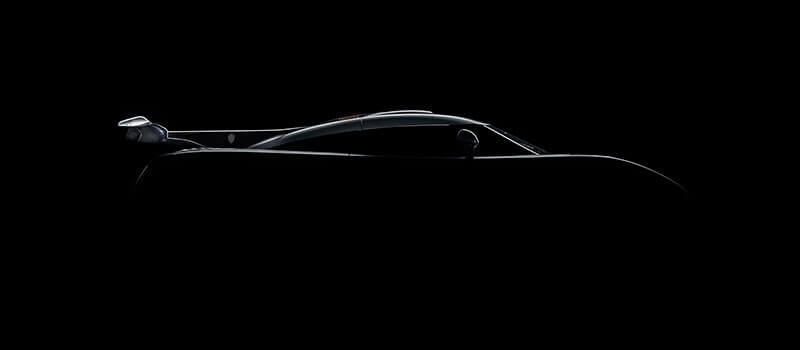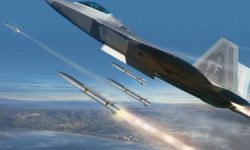The Hennessey Venom GT just hit 270 MPH on a runway. The Koenigsegg One:1 thinks that’s cute. And that’s because it should be able to hit 280 MPH. Oh, and it can go around corners like mad. Welcome to the new king of speed and a fast (no pun) look at the technology used to make these cars break new records, CNC machining.
Throughout history, our kind has developed an innate obsession over speed. Be it ostriches in the ancient times, horses or cars in more recent, race competitions have always encouraged people to innovate and gain a competitive edge over their opponents. This has only amplified after the creation of automobile vehicles in the late 19th century. Enthusiasts and manufacturers are constantly driven to innovate and develop faster cars, and this is where CNC machining & 3D printing comes in. These prototyping and low manufacturing technologies allow manufacturers to make lighter and more precise car parts with better aerodynamics, which helps cars reach new limits. Before we dive into the fastest cars of today, let’s look at the technology driving all the innovation.
The CNC machine & 3D Printer
CNC or Computer Numerically Controlled machines are electro-mechanical devices that can create precise physical prototypes of designs through computer programs. The technology was first developed in the 40’s and 50’s. Back then, manually written codes were required to operate these machines. But ever since the invention of computers, this technology has reached new grounds. Unlike its rival, 3D printing, CNC machining is a subtractive process.
Meaning, it starts with a block of the preferred material and precisely cuts through and around it using multiple tool heads to create the desired 3D prototypes. The computer code used for this particular technology is called the G-Code. Its precision is measured in the thousandth of an inch, which is close to the width of a single hair strand. CNC machines are mostly operated with drills, lathes and milling machines, the last being the most useful of all. Manufacturers can use a wide range of materials for CNC machining depending on their product.
3D printing or additive manufacturing is a process of making 3D solid objects from a digital CAD file. The creation of a 3D printed object is achieved using additive processes. In an additive process, an object is created by laying down successive layers of material until the object is eventually created. Each of these layers can be seen as a thinly sliced horizontal cross-section of the eventual object. 3D printing enables you to produce complex (functional) shapes using less material than traditional manufacturing methods.
Use of CNC machining & 3D Printing in the car industry
CNC machines are used in the automotive industry to manipulate materials like steel and aluminum into making a variety of car parts like the engine pistons, brake disks, body parts, etc. with extreme precision. The manufacturers will typically first design prototypes using 3d printers and then process them into the CNC machine through G-Code. These CNC machining prototypes then undergo experimentations with different designs, allowing the manufacturers to develop the best design for the maximum speed and efficiency of their vehicles. The precision of the machine also helps to cut off any excess and unnecessary weight, allowing the cars to be lighter and faster.
There are parts and components of a car like a gearbox, chassis or the drive axle that are so intricate in their design that it can get incredibly difficult to process and produce these components through manual labor. By CNC machining & 3D printing prototypes, these parts can be produced in a fraction of the time with the highest efficiency, provided with the proper coding.
The four phases of automobile production; stamping, welding, painting, and assembly, can all be controlled and operated by the CNC machine tools, to the point where human intervention is not at all required. This can be observed in the new Tesla factory where they have relied almost completely on automation, regardless of public criticism.
High-end sports car brands like Bugatti, Pagani, and Ferrari, depend on the slightest of changes in achieving their desired benchmark. The weight of the components and the aerodynamics of a vehicle play a big role in achieving these benchmarks. This is where CNC machining becomes extremely useful as well as the use of ultra lightweight carbon fiber. The impeccable precision of these machines renders the intricate designs of these sports cars possible, making the fastest cars that mesmerize the world.
The newer model of CNC, which can operate in 5 different axes, accelerates production beyond anything else. These innovations can solve the issues companies like Tesla now face with their production limit, the supply being relatively scarce in comparison to the demand.
It is common practice for big companies to rely on CNC machining for their manufacturing and eliminating any possibility of human error in the process. Porsche has even gone the extra mile of designing their 911 Spyder completely with CAD (computer-aided design), a form of CNC machining.
Even though CNC machines have been around for decades, they are still quite expensive, so smaller manufacturers can’t always rely on them and this is where 3D printers have become useful. The CNC machine uses an array of tool heads for executing a multitude of tasks, which can bear immense costs. But the precision and the efficiency of CNC machines is incomparable to any other alternative. Let’s take a look at how CNC machines & 3d printing tech has helped make the fastest car on the road today.
Koenigsegg’s Agera R and Agera S are not what you’d call tame, boring, cars as they boast upwards of 1,000 horsepower and are very lightweight. A few years ago, their production team leader Christian heard rumors of what was coming from Porsche, Ferrari, and McLaren. He wanted to be prepared with something that could take them on.
The Koenigsegg One:1 has 1,360 horsepower at 7,500 RPM (8,250 redlines) and 1,000 NM (737 lb-ft) of torque from 3,000 until 7,500 RPM from a revised version of Koenigsegg’s 5.0 liter turbocharged V8. That’s a lot, like a crazy amount.
Christian says they like to call the One:1 the world’s first “mega car.” Not because it doesn’t fit a class, but because 1,360 horsepower equals 1 megawatt. It could make more power with more boost, but they wanted to achieve a balance that equaled more drivability and response. Christian’s goal was an engine that came on full steam around 2,500 RPM, a higher boost turbo would have delayed that until 4,000 RPM. The torque curve on the One:1 is simply mesmerizing. It isn’t totally flat, but it’s darn close.
It also uses a new variable geometry turbocharger with something you don’t hear everyday: The internals are 3D printed. That helped them achieve the shape they wanted as well as keeping the weight down.
In addition to the internals of the turbocharger, 3D printing is used on the exhaust tip.
A platform like https://www.3dnatives.com is the leading source for all things 3D printing and additive manufacturing, from there you can learn more everything about 3d printing.
In fact, this exhaust tip is the largest piece of 3D printed titanium ever built. It actually takes three whole days to produce. That would be amazingly inefficient for a mass produced car, but it actually works in favor of a bespoke maker like Koenigsegg. Instead of dealing with costly suppliers that are too complex to get just six pieces from, 3D printing lets them control their workflow.
On the outside, the monocoque looks like the one that is in the Agera, but the One:1 uses an entirely new weave of carbon fiber that could be up to 40% lighter than the weave used in the Agera. In fact, this new generation of carbon fiber is the same that you see on new F1 cars. Carbon fiber is light as a feather and a real game-changer in these lightning fast cars.
Now hold on to your seat, as here’s where Koenigsegg is entering uncharted waters. For the first time, the small company out of Angelholm is using active aerodynamics. On the underside of the front end, cutouts are added to the carbon fiber to weaken it. Then there are hydraulic actuators which are actually used to bend the carbon fiber and direct the air through the body and out through the hood. When the car is in top speed mode, the flaps are closed to reduce downforce and make it as stealth as possible.
Pass the carbon fiber, please. Everything, yes, everything is carbon fiber. The seats, the wheels, the body, the monocoque safety cell, even the sun visors are carbon fiber, which Christian says saved them about 100 grams each. The point is, that might not sound like much, but every little bit counts here.
That’s how the One:1 weighs in at 1,360 kilograms. And that’s not dry weight. It’s with a half tank of gas and all other fluids full. Truly an amazing feat.
The Koenigsegg 1, though, has been taken over in the past year as Bugatti reclaimed its title for fastest car with the launch of its Chiron. To see this baby fly, check this video out of the top ten fastest cars manufactured https://www.youtube.com/watch?v=73V0Y1HL6G8.
I’d put my money on Christian and his team launching back into pole position over the course of the next year and CNC machining being behind it.
Feel free to check our automotive prototyping and parts manufacturing services for more information.










